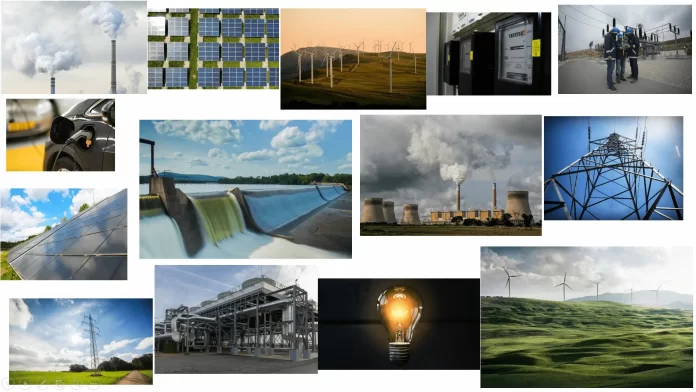The energy power crisis that hit the European Union since the beginning of the war in Ukraine has provoked the bringing of desisions to proclaim the self-sufficiency of the continent as the most pressing priority. Due to the war and the crisis with energy sources the prices of energy have skyrocketed which accelerated plans for the production of local renewable energy but increasing at the same time i the demand for all energy sources, including those that are not under the green umbrella. How to acquire sufficient electric power to satisfy all needs is the question troubling many European countries. The publicly posted data on the websites of HEP, HOPS, HROTE, CROPEX, Nuclear Power Plant Krško, ENTSO, DZS, RTE France, RED Electrica, World Data, IEA, EEX, EPEX have resulted in an analysis of Electric power conditions in the Republic of Croatia for October, drawn up by Eng. Marko Lovrić. The analysis indicates how much electricity was generated in Croatia, how much power we imported and our standing with the production of electric power from renewable sources, Before that, below is a short review of trends from 2000 to 2021,
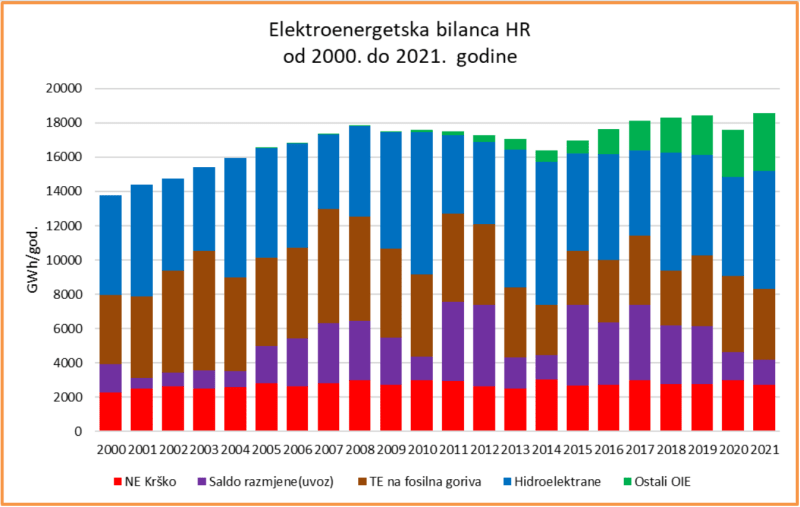
Regarding the electric power status of Croatia in the period 2000 -2021, a decrease can be depicted in the consumption of electricity during the economic crisis period, i.e., from 2006 to 2014 as well as during the Covid pandemic in 2020.
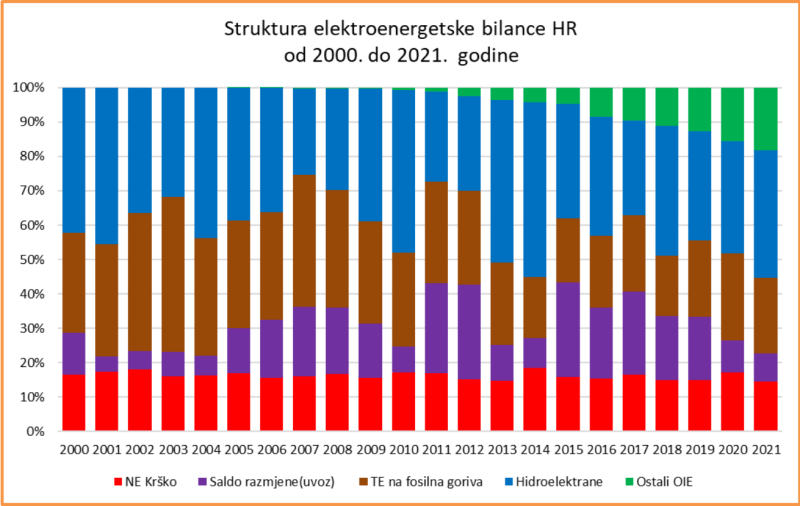
The Croatian electric power balance sheet began to change as of 2012 from the time of the increased production of energy from renewable sources while its import was gradually decreasing.
Octobers of 2017-2020
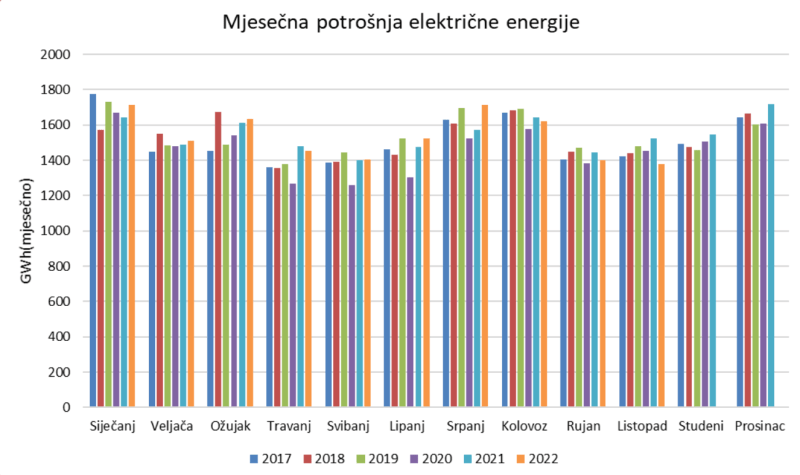
The consumption of electric power in October of this year amounted to 1380 GWh which is 9.7% (146GWh) less as compared to the same month last year. It is the consequence of warmer weather during this part of the year and the absence of heating during the first nine months of the year.
First nine months of 2022
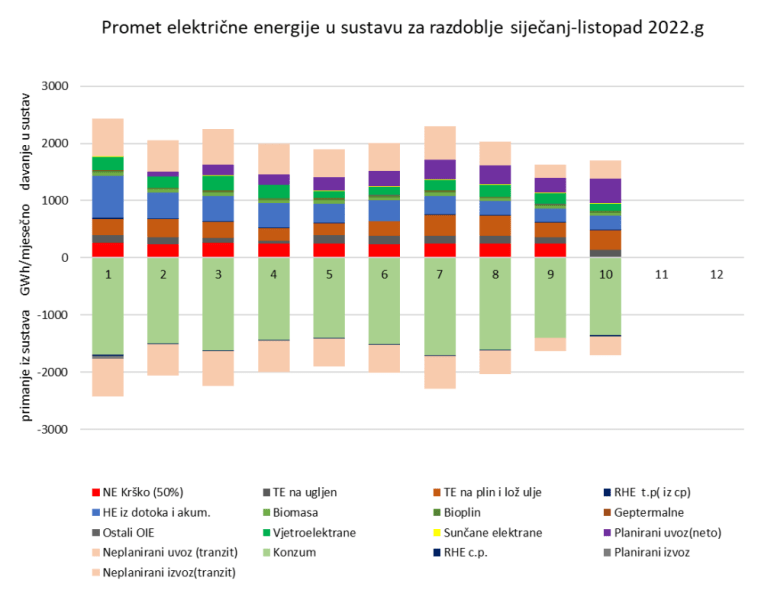
In the first nine months of this year the consumption of electric power increased by 0.5% in relation to the same period last year.
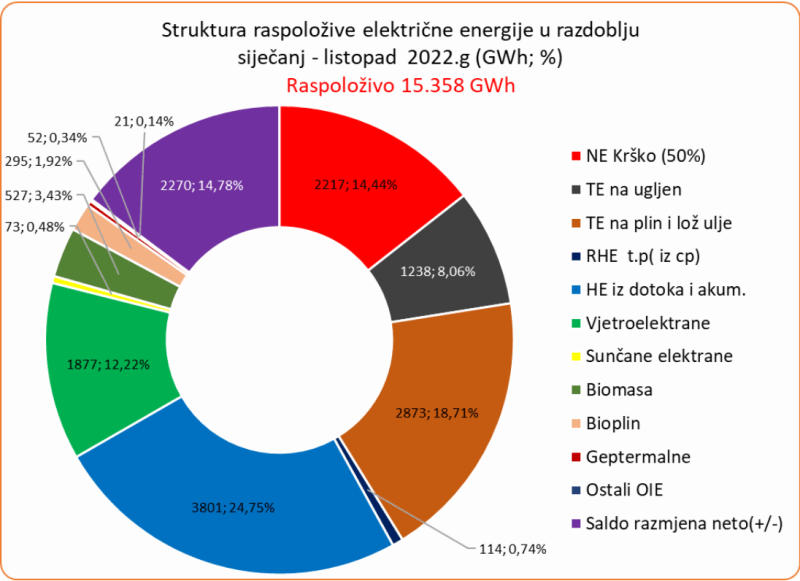
In this exceptionally dry year, our hydro-electric power plants generated in the period from January to October, 3801 GWh of electricity and accounted for a share of 24.75% in the overall energy mix. In the same period, we imported 2270 GWh of electric power, namely 14.78%. As to renewable energy sources, the greatest share came from wind farms, namely, 12.22%. Solar energy participated with 0.48%, biomass plants with 3.43%, bio-gas plants with 1.92% and geothermal plants with 0.34% in the electric power structure.
October 2022
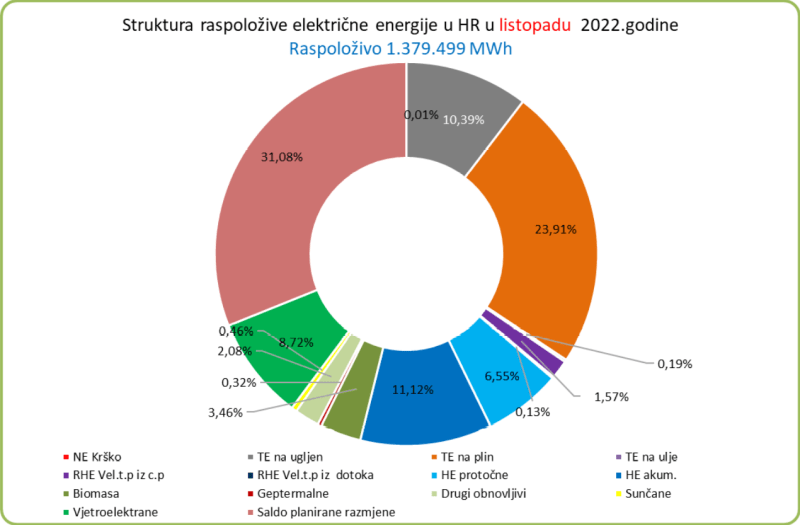
Given that October was a dry month, the generation of electricity from electro-hydro plants participated with a share of 17.57% in the structure of available energy. The considerably lower shares of wind farms in October are also visible as they participated with 8.72% in the overall production. In September their share amounted to 13.68%. At the same time, in October, the nuclear power plant Krško was undergoing its annual repairs due to which the increased production of gas power plants was recorded as well as a growth of imports. The monthly consumption of electric power in October amounted to 1.350 GWh. Renewable energy sources accounted for 246 hours of consumption in October. In the structure of available electric power, renewable sources participated with 33%, which is along with August, the lowest result this year. The share of RES in the first nine months of this year amounted to 43%. Due to the decreased production of hydroelectric power plants and wind farms, the net import of electric power in October reached 428 GWh, and in ten months 2270 GWh.
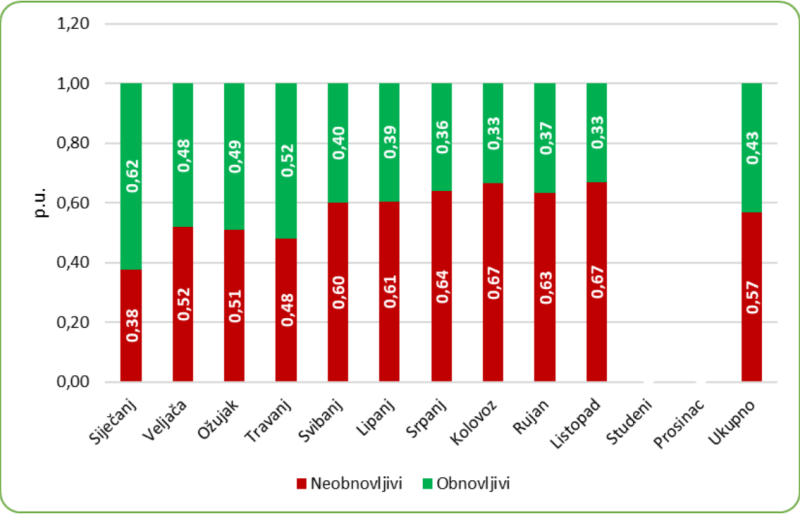
The overall wind power plant production in October amounted to 120 GWh (the lowest monthly production this year), while the power usability factor was 16.5% due to the below-average windiness.
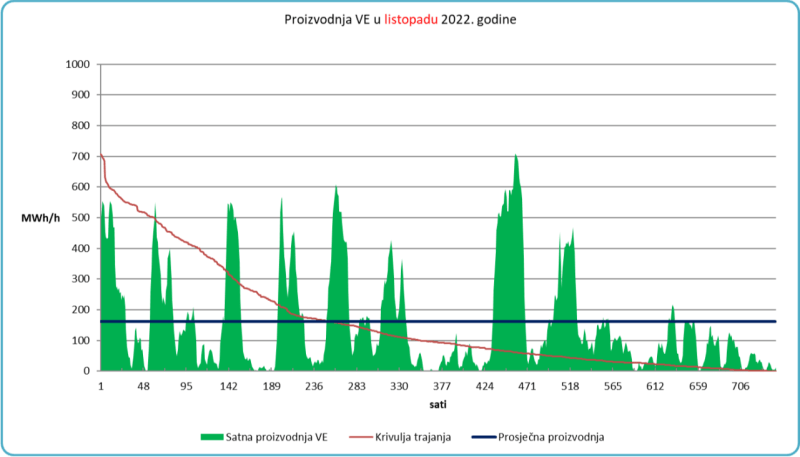
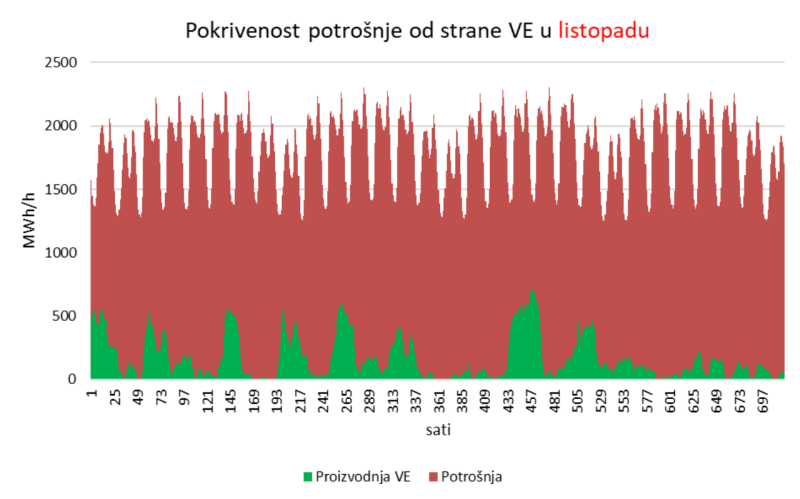
In comparison with other European countries, Croatia is less exposed to the energy crisis, primarily owing to the large share of hydroelectric power plant production, increased production from renewable sources, nuclear power plant Krško production and its domestic production of gas whose costs are to the main part fixed and thereby independent of the international situation linked to fossil fuels. However, winter is yet to come and with it new energy needs. The main uncertainties Croatia could face will relate to the supply of gas, hydrological conditions linked to the flow of water for hydroelectric plants and the energy situation in neighboring and other European countries.


